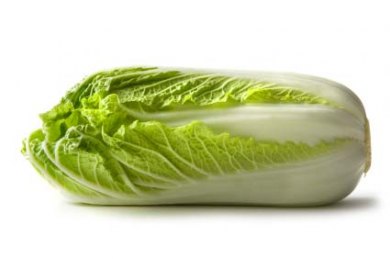Napa cabbage
Chinese cabbage (Brassica rapa subsp. Pekinensis )
Chinese cabbage (Brassica rapa subsp. Pekinensis ), also called Peking cabbage, Japan cabbage, celery cabbage, is a vegetable. Chinese cabbage forms a solid, oval to narrowly cylindrical head with a weight of 1-3 kg. Its leaves are usually yellow-green and have wide, white, slightly curled leaf veins. From Chinese cabbage, there are many cultivars. It is available all year round, with its main harvest season in October and November is. Chinese cabbage is in the kitchen as a food versatile. Not to be confused with the Chinese mustard cabbage ( see Pak Choi ), is the slightly smaller heads and the chard similar dark green leaves.
History
Chinese cabbage to have originated from a cross between the turnip mustard cabbage. It was first cultivated in the 5th century in China, where it is as Baicai (Chinese白菜, Pinyin báicài, white vegetables ') respectively. From the 15th century it was grown in Korea and in the 19th century in Japan. In Europe, Chinese cabbage has been known since the early 20th century.
Use
Chinese cabbage is used as a vegetable in soups and stir-fries or salads. Fermented milk Auer he is a typical dish as kimchi in Korea and as hakusaizuke (白菜 漬け, " pickled Baicai / Chinese cabbage " ) in Japan.
Ingredients
Chinese cabbage contains the following significant substances:
Pests
In the leaves of Chinese cabbage are often the dolls of the cabbage root fly to find.









